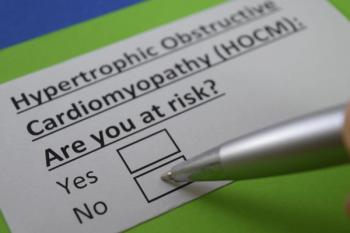
A real-world solution to drug diversion in health systems
Continuous monitoring is what's needed. Fortunately, there's a platform for that.
At the beginning of this year, the Centers for Disease Control and Prevention (CDC) issued a report about the drug abuse epidemic sweeping the nation. The numbers are staggering.
From 2000 to 2014, almost half a million people in the United States died from drug overdoses. In 2014, more
Kim Newindividuals died from drug overdoses than from motor vehicle accidents. Opioids such as oxycodone and hydrocodone, along with heroin, were the drugs of choice in those overdose cases.
"As healthcare professionals, we are not immune to those statistics and that type of behavior," said Kim New, BSN, JD, former diversion specialist at University of Tennessee Medical Center and founder of Diversion Specialists. "We have the increased access and availability, and that whole issue can become harmful very quickly."
The need for action
Health systems must be proactive to protect their patients and their employees against drug diversion. Initiatives include education and transparency.
"Historically, [health systems] have kept very hush-hush, because they don't want anyone to know that it happens. Many times these events are treated as isolated events. They are dealt with, people move on, and nobody talks about it," said New, who worked as a neonatal critical-care nurse for several years.
"Staff need to understand that they are at risk, their colleagues are at risk, patients are at risk, and that drug diversion can impact them and their institution," she continued. The issue is personal for her; a friend died from an overdose of drugs acquired through diversion.
To prevent, detect, and respond to drug diversion, health systems need a formal program in place. Continuous monitoring in the pharmacy and on patient floors is essential to quick detection of diversion. In order to be effective, a multidisciplinary effort is needed, with nurses and pharmacy managers working collaboratively to provide the best coverage for diversion prevention and detection, New said.
Auditing tools
One of the newest auditing tools available to aid in drug-diversion management is the Omnicell Analytics platform, released at the ASHP meeting in New Orleans last December.
Nilesh DesaiThis web-based diversion-analytics tool helps to streamline the process of detection of potential drug diversion by tracking usage of controlled substances and supplementary drugs such as acetaminophen, as well as dispensing patterns over time, said Nilesh Desai, RPh, MBA, administrator of pharmacy and clinical operations, Hackensack University Medical Center, Hackensack, N.J.
The analytics platform is able to track whenever an automated dispensing cabinet (ADC) is accessed, noting the time, the user, the amount dispensed, and any returns. This dispensing information is compared to the medication orders for each nurse and also compared to usage patterns of their peers. A trending score generated for each healthcare employee dispensing these medications can identify any outliers very quickly.
At a glance
The analytics tool has brought all necessary information together in a single screen, said Desai - individual medication orders and the specific drugs dispensed.
"Prior to this tool, we would have to do a lot of the work in the pharmacy based on an initiation given by the nurse or depending on our audit tools," Desai said. "Whenever we had a potential diversion issue, we would have to run the reports in Pandora and our clinical information in our EHR, and then compare the records. The Omnicell Analytics platform has saved hours and hours’ worth of time, because it directly points to the issue," he said.
In addition, nurse managers have access to the tool, so they can view the same information about their units as is seen by the pharmacy managers.
Daily review
"We review the data [from the analytics platform] every day, because sometimes you can catch things quickly and prevent harm. The goal is prevention of diversion - not to wait and react," said Desai.
Continuous monitoring is essential, because diversion schemes can spiral out of control very quickly, New said. "It is very important for more than one set of eyes to be looking at transaction data, so that evolving patterns and trends can be picked up immediately."
"With the limited staff and the need to capture all the data in a health system, even a small one, I feel that analytics are really the best way to go," said New.
Newsletter
Pharmacy practice is always changing. Stay ahead of the curve with the Drug Topics newsletter and get the latest drug information, industry trends, and patient care tips.











































































































































































































